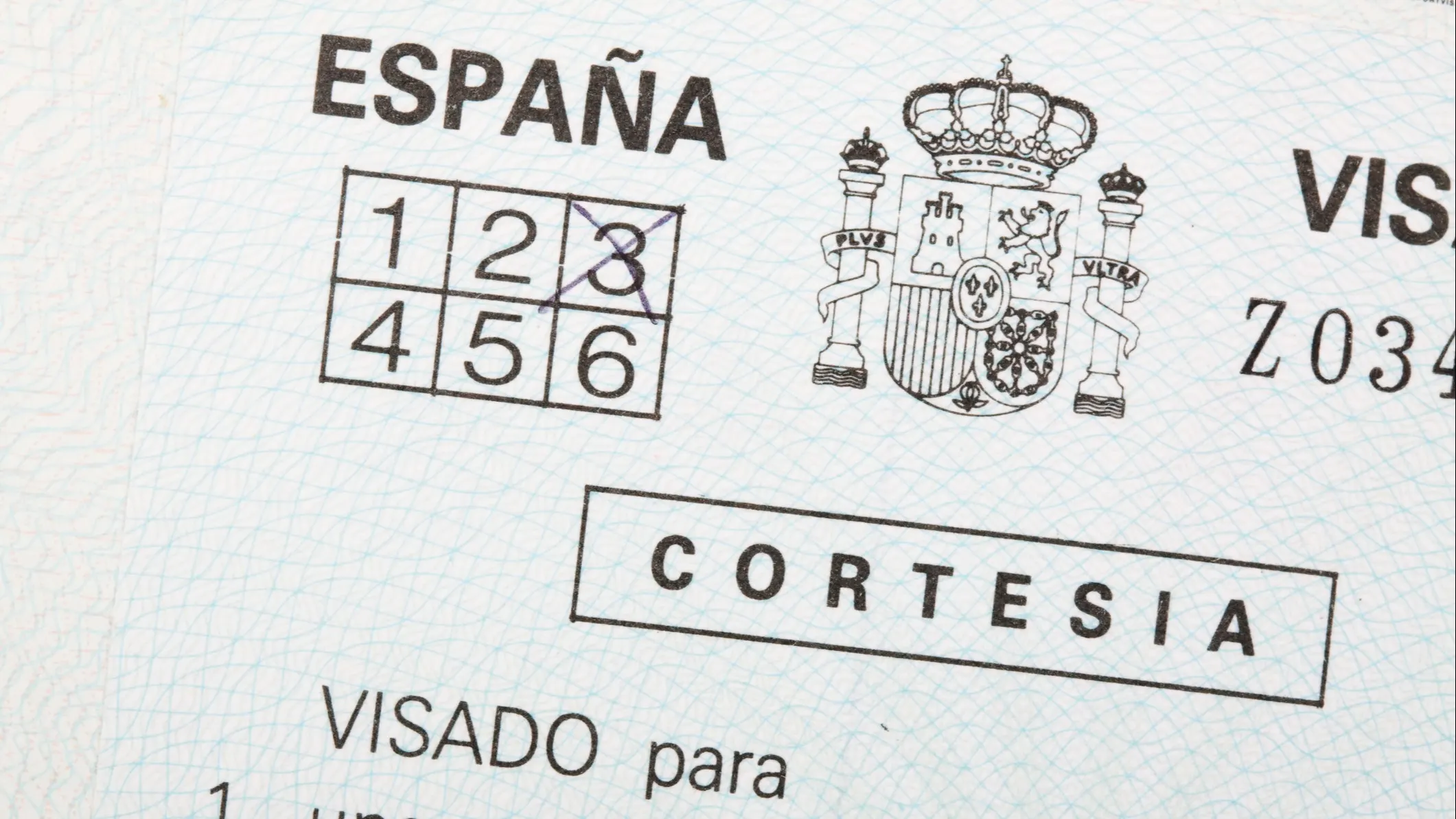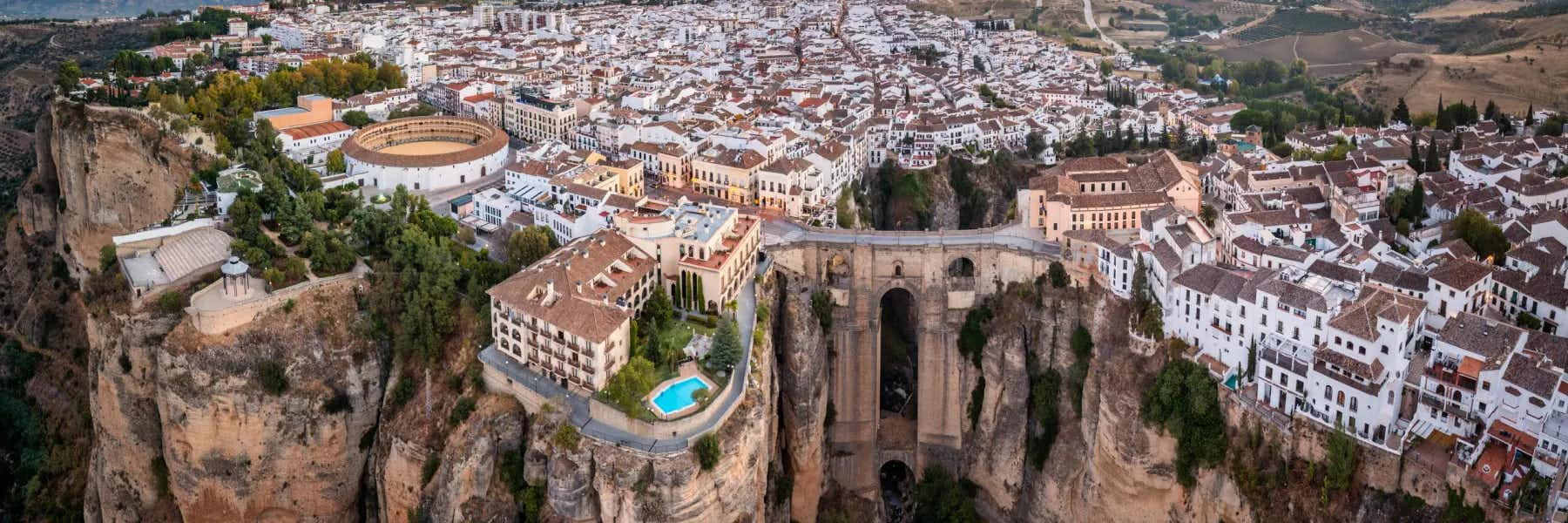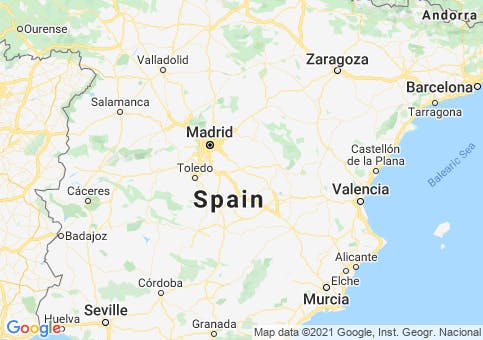When moving to a new country, nothing is more important than having the correct visa and residency permit. Like the rest of the EU, Spain follows a fairly straightforward visa procedure. For somebody retiring, the optimal choices are either the non-lucrative or the golden visa—both of which can be made permanent should you fall in love with Spain.
The tourist stay is 90 days during a 180-day period under the Schengen tourist visa. This period is visa-free for American citizens and most other Westerners. Keep in mind that you can’t apply for further visas during this tourist period. You have to do it from home. However, residency can be applied for after you arrive in Spain.
Get Your Free Spain Report Today!
Get Your Free Spain Report Today!
Learn more about Spain and other countries in our free daily postcard e-letter. Simply enter your email address below and we'll also send you a FREE REPORT — Live the Good Life in Sunny, Affordable Spain.
By submitting your email address, you will receive a free subscription to IL Postcards and special offers from International Living and our affiliates. You can unsubscribe at any time, and we encourage you to read more about our Privacy Policy.
Video: Guide to Visa and Residency in Spain
Temporary Visas for Spain
You’ll need a temporary visa or residency permit to stay in Spain, or any other Schengen country for longer than 90 days. If you’re already a citizen or resident of an EU country, you only need to get the local registration certificate—no need to apply for any visa. If you’re not from Europe, you’ll need a temporary residence permit for longer than 90 days but less than two years. For those only retiring in Spain, or those that own or work for companies outside of Spain, the non-lucrative residencyis usually the best option. Working and earning money in Spain, or for a Spanish company, is not allowed with this visa. The only requirements are proof of private health insurance and funds to live in Spain - and it can be renewed every year, provided you still meet the necessary criteria.
For a residency that allows economic activity and more freedom, the Spanish investor visa will give immediate permanent residency to non-EU citizens who invest a large amount of money in Spain. This can be done in three ways: possessing a deposit in a Spanish bank with a value of surpassing one million euros, or buying significant shares in a Spanish company, or buying real estate in Spain at a minimum of 500,000 euros (roughly 540,000 USD). For this reason, it’s also called the “golden visa,” and is both the easiest, and most expensive way, of settling down in Spain.
Permanent Residency in Spain

For those who do fall in love with Spain and decide to stay for life, permanent residency is possible. This can be done in several different ways. First of all, the non-lucrative visa can be extended into a permanent residency after five uninterrupted years. The same applies to the investor visa; out of the past five years, at least four must be spent inside Spain. Permanent residency is also the main path to Spanish citizenship, if that’s your goal.
Once you obtain your residency, you can usually access public healthcare, and I state usually because it depends on which autonomous region you live in. They vary, with some offering public healthcare as soon as you gain your residency, and for others, you must be a resident for one year before you get access to public healthcare.
Additionally, once you receive your permanent residency, you can get a job if you wish.
Spanish Citizenship
Spanish citizenship is an enormous step. There are several massive benefits; getting a Spanish passport, the ability to vote in Spain, free movement in 183 countries, the ability to live wherever you want in the EU, and not least of all, no more paperwork. Becoming a citizen by permanent residency is called naturalizationin Spain: citizenship simply by living there long enough. The length of this period varies depending on your status: one year if you’re married or related to a Spanish citizen, two years if you’re a citizen of a Latin American country, and ten years for everyone else. However, there’s a significant downside: you have to renounce your original citizenship if you are not a resident of a Spanish-speaking Latin American country. Permanent residency is a far better option if you’re not prepared to do so. Another option for a select few is citizenship through ancestry. If one of your parents was born in Spain and has Spanish citizenship, you can directly apply for citizenship without having to live in the country.
Spain’s Requirements and Documentation
Documentation is the most important thing to remember when settling down in Spain; the unavoidable paperwork becomes easier when everything is in order.
The first lengthy paperwork process is for a retiree or someone applying for a non-lucrative residency. You’ll need to bring your original passport, two passport-size photos, a medical certificate, a properly translated clean criminal record, and the required visa application forms. On top of these documents, the applicant must provide two things.
1: A proof of private health insurance from a Spanish provider during the whole period of residence.
1: A minimum amount of 28,800 euro (roughly 30,000 USD) in the bank, or proof of required monthly income of 2,400 euro (approximately 2,550 USD).
However, you’d ideally have more money if you want a quick, successful application. The Spanish authorities will usually check your bank statement for the past six months to make sure.
After getting this residency, you must apply for the TIE (the foreign resident’s ID card) within three months. Each time you extend the residency, the card will also have to be renewed.
The investor visa requires most of the same documents as above: an original passport, translated criminal record, public or private health insurance, the required visa application form, and documentation that accredits your investment in Spain. You will have to apply twice, initially at the Spanish consulate at home, and then again in Spain, once approval is given. Once you’re in Spain, you have one month to re-apply and get the TIE card.
The permanent residency process isn’t difficult—see it as your reward for sticking around and renewing for five years. The only documents needed are the original passport and copy, the current residency documents, the required EX-11 residency form, and proof of payment of whatever fee you might owe for expired cards. The most important thing, however, is hard evidence that you’ve lived in Spain for five uninterrupted years. In our experience, the best kind of evidence is a rental contract and a copy of your empadronamiento (official housing register).
The citizenship by naturalization process also has its own set of requirements. Only the validity of your resident ID card will be counted; any time in between won’t count toward your citizenship application. Tourism doesn’t count, only residency. You also have to prove you’ve lived the required number of years in Spain (usually ten) without interruption—an absence of more than three months can lead to you being denied. Finally, you need a spotless criminal record to apply because the police’s background checks are strict.
Processing Time in Spain
The amount of time varies with each type of visa and residency option. While all these times are rough estimates and can change wildly depending on the situation, there are a few guidelines for how long you’ll have to wait.
The non-lucrativeresidency is fairly easy to get, and the average processing time is thirty days after submitting all documentation and proof of funds.
The investor visa typically takes twenty days to get approved after making the financial investment and providing all documentation. Afterward, you have one month to apply for the “golden visa” in the Spanish consulate at home, then travel to Spain and resubmit with the approval. Altogether, it takes about fifty days.
Citizenshipprocessing time is the longest by far. The Spanish authorities have a time limit of one year to submit their response to your application, but the entire process from start to end can sometimes take up to three years. The average time is around two years. As long as your residency hasn’t expired, you can travel in and out of Spain during this process.
There are several ways to check the status of your visa or residency application, and the Spanish authorities usually favor the web platform BLS for this. You can easily track your application’s status on blsspainvisa.com by entering your full name, date of birth, and the reference number you got when submitting the application.
Costs Associated With Residency
The payment must be in euros for all fees and costs associated with these visa and residency options. Bank transfers and card payments are accepted at most consulates, and euros in cash are generally accepted.
The non-lucrative residency costs 80 euros (86 USD). Apart from this application fee, the cost of obtaining the other documents (including translations and notarizations) can vary depending on the country/city you are in. Getting the TIE foreigners’ card is mandatory and currently costs 12 euros (13 USD).
The investor visa is the most expensive; the legal costs are currently around €8,000 (8,475 USD) for a single applicant and €2500 (2,650 USD) for each renewal.
The permanent residency application costs 80 euros (86 USD), while the associated costs of getting all the needed paperwork may be up to another 20 euros (21 USD).
Citizenship by naturalization currently costs 104 euros (112 USD), though the price increases slightly every year.
Immigration to Spain
The immigration process is relatively easy for a person looking to retire in Spain, despite the large amounts of paperwork and long waiting times. When moving to a new country, to live, or retiring, nothing is more important than having the correct visa and residency. Spain follows a straightforward visa procedure, like the rest of the EU.
As a retired person, the ideal option is the non-lucrative visa, which essentially allows you to retire on the condition that you prove your funds, stay retired, and enjoy life. If you’re looking to buy real estate or invest in a local company, the investor visa or “golden visa” is the way to go. After having lived there for five years, permanent residency is almost guaranteed. Finally, getting citizenship by naturalization provides many advantages but, in most cases, it forces you to renounce your current citizenship.
You can visit the Spanish government’s associated platform BLS or specialized visa consultation websites for further information. Reading reviews and getting referrals for any legal companies or personnel you may use is very important, and contacting an immigration specialist is highly recommended.
Get Your Free Spain Report Today!
Get Your Free Spain Report Today!
Learn more about Spain and other countries in our free daily postcard e-letter. Simply enter your email address below and we'll also send you a FREE REPORT — Live the Good Life in Sunny, Affordable Spain.
By submitting your email address, you will receive a free subscription to IL Postcards and special offers from International Living and our affiliates. You can unsubscribe at any time, and we encourage you to read more about our Privacy Policy.














